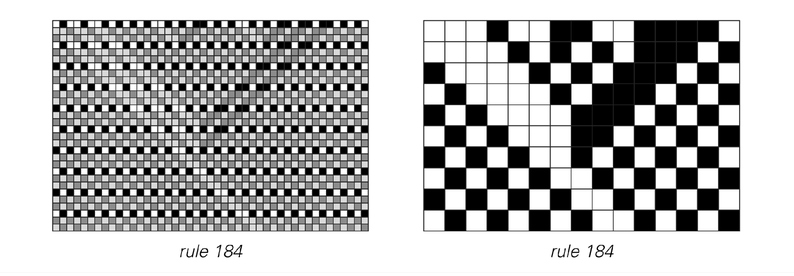produced must have exactly the same structure whether it is looked at in terms of individual cells or in terms of blocks of cells. And this can be achieved in only two ways: either the pattern must be essentially uniform, or it must have a nested structure—just like we see in rule 90.
So what happens with other rules? It turns out that the property of self-emulation is rather rare among cellular automaton rules. But one other example is rule 150—as illustrated in the first set of pictures below.
So what else is there in common between rule 90 and rule 150? It turns out that they are both additive rules, implying that the patterns they produce can be superimposed in the way we discussed on page 264. And in fact one can show that any rule that is additive will be able to emulate itself and will thus yield nested patterns. But there are rather few additive rules, and indeed with two colors and nearest neighbors the only fundamentally different ones are precisely rules 90 and 150.
Ultimately, however, additive rules are not the only ones that can emulate themselves. An example of another kind is rule 184, in which blocks of three cells can act like a single cell, as shown in the second set of pictures.


Another example of a rule in which blocks of cells can behave just like individual cells. Rule 90 and rule 150 are also essentially the only fundamentally different elementary cellular automaton rules that have the property of being additive (see page 264).
 |  |
A rule that is not additive, but in which blocks of cells can again behave just like individual cells.